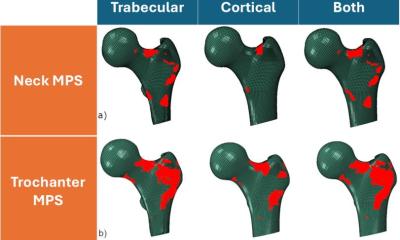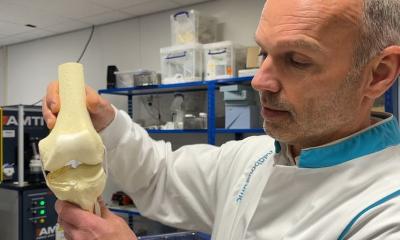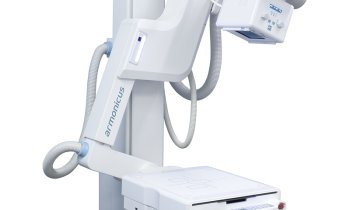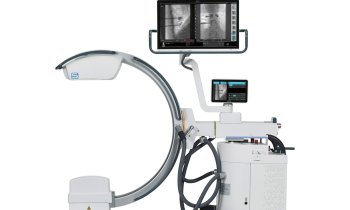Regenerative medicine
Sugar-coated nanomaterial excels at promoting bone growth
There hasn't been a gold standard for how orthopedic spine surgeons promote new bone growth in patients, but now Northwestern University scientists have designed a bioactive nanomaterial that is so good at stimulating bone regeneration it could become the method surgeons prefer.
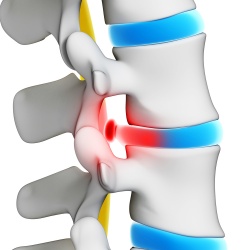
While studied in an animal model of spinal fusion, the method for promoting new bone growth could translate readily to humans, the researchers say, where an aging but active population in the U.S. is increasingly receiving this surgery to treat pain due to disc degeneration, trauma and other back problems. Many other procedures could benefit from the nanomaterial, ranging from repair of bone trauma to treatment of bone cancer to bone growth for dental implants. "Regenerative medicine can improve quality of life by offering less invasive and more successful approaches to promoting bone growth," said Samuel I. Stupp, who developed the new nanomaterial. "Our method is very flexible and could be adapted for the regeneration of other tissues, including muscle, tendons and cartilage." Stupp is director of Northwestern's Simpson Querrey Institute for BioNanotechnology and the Board of Trustees Professor of Materials Science and Engineering, Chemistry, Medicine and Biomedical Engineering. For the interdisciplinary study, Stupp collaborated with Dr. Wellington K. Hsu, associate professor of orthopaedic surgery, and Erin L. K. Hsu, research assistant professor of orthopaedic surgery, both at Northwestern University Feinberg School of Medicine. The husband-and-wife team is working to improve clinically employed methods of bone regeneration.
Sugar molecules on the surface of the nanomaterial provide its regenerative power. The researchers studied in vivo the effect of the "sugar-coated" nanomaterial on the activity of a clinically used growth factor, called bone morphogenetic protein 2 (BMP-2). They found the amount of protein needed for a successful spinal fusion was reduced to an unprecedented level: 100 times less of BMP-2 was needed. This is very good news, because the growth factor is known to cause dangerous side effects when used in the amounts required to regenerate high-quality bone, and it is expensive as well. Stupp's biodegradable nanomaterial functions as an artificial extracellular matrix, which mimics what cells in the body usually interact with in their surroundings. BMP-2 activates certain types of stem cells and signals them to become bone cells. The Northwestern matrix, which consists of tiny nanoscale filaments, binds the protein by molecular design in the way that natural sugars bind it in our bodies and then slowly releases it when needed, instead of in one early burst, which can contribute to side effects.
To create the nanostructures, the research team led by Stupp synthesized a specific type of sugar that closely resembles those used by nature to activate BMP-2 when cell signaling is necessary for bone growth. Rapidly moving flexible sugar molecules displayed on the surface of the nanostructures "grab" the protein in a specific spot that is precisely the same one used in biological systems when it is time to deploy the signal. This potentiates the bone-growing signals to a surprising level that surpasses even the naturally occurring sugar polymers in our bodies. In nature, the sugar polymers are known as sulfated polysaccharides, which have super-complex structures impossible to synthesize at the present time with chemical techniques. Hundreds of proteins in biological systems are known to have specific domains to bind these sugar polymers in order to activate signals. Such proteins include those involved in the growth of blood vessels, cell recruitment and cell proliferation, all very important biologically in tissue regeneration. Therefore, the approach of the Stupp team could be extended to other regenerative targets.
Spinal fusion is a common surgical procedure that joins adjacent vertebra together using a bone graft and growth factors to promote new bone growth, which stabilizes the spine. The bone used in the graft can come from the patient's pelvis - an invasive procedure - or from a bone bank. "There is a real need for a clinically efficacious, safe and cost-effective way to form bone," said Wellington Hsu, a spine surgeon. "The success of this nanomaterial makes me excited that every spine surgeon may one day subscribe to this method for bone graft. Right now, if you poll an audience of spine surgeons, you will get 15 to 20 different answers on what they use for bone graft. We need to standardize choice and improve patient outcomes."
In the in vivo portion of the study, the nanomaterial was delivered to the spine using a collagen sponge. This is the way surgeons currently deliver BMP-2 clinically to promote bone growth. The Northwestern research team plans to seek approval from the Food and Drug Administration to launch a clinical trial studying the nanomaterial for bone regeneration in humans. "We surgeons are looking for optimal carriers for growth factors and cells," Wellington Hsu said. "With its numerous binding sites, the long filaments of this new nanomaterial is more successful than existing carriers in releasing the growth factor when the body is ready. Timing is critical for success in bone regeneration."
In the new nanomaterial, the sugars are displayed in a scaffold built from self-assembling molecules known as peptide amphiphiles, first developed by Stupp 15 years ago. These synthetic molecules have been essential in his work on regenerative medicine. "We focused on bone regeneration to demonstrate the power of the sugar nanostructure to provide a big signaling boost," Stupp said. "With small design changes, the method could be used with other growth factors for the regeneration of all kinds of tissues. One day we may be able to fully do away with the use of growth factors made by recombinant biotechnology and instead empower the natural ones in our bodies."
Source: Northwestern University
22.06.2017



